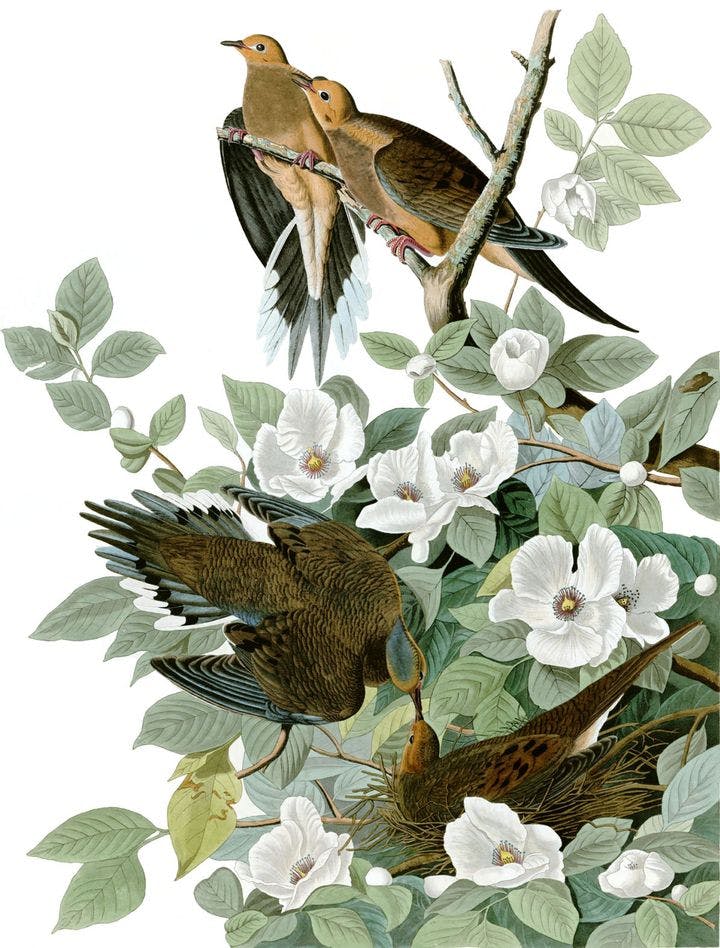Spring 2008
Fowl Sport
– Mark Jerome Walters
“Like most good histories,” writes reviewer Mark Jerome Walters, “Scott Weidensaul's fascinating account of birding in America dispels many myths.”
Like most good histories, Scott Weidensaul’s fascinating account of birding in America dispels many myths. While most histories of American ornithology begin with the early-19th-century luminaries Alexander Wilson and John James Audubon, Weidensaul points out that birding on this continent was pioneered by “field ornithologists” who were here long before: “the Indians, of course, whose knowledge of birdlife was based on deep association, long observation, and at times lifesaving necessity.”
Weidensaul also challenges often-cited federal estimates that there are between 46 million and 68 million U.S. birders—a term that, loosely construed, describes even people who hang a bird feeder on the porch. Only about six million people can identify more than 20 bird species, according to the U.S. Fish and Wildlife Service; the rest hardly deserve the badge of a true “birder.” However birding is defined, it is one of the fastest-growing outdoor activities in the United States. It’s an inexpensive pursuit for retirees and appeals to the growing number of people interested in the environment.
Weidensaul patiently and methodically sketches the scientific and artistic contributions of the most famous early birders, including Mark Catesby, William Bartram, and John James Audubon, as well as many less known figures. Woven into this history are interesting subplots, such as the evolution of field guides from crude identification tools into the colorful and comprehensive identification books (and other media) of today.
Weidensaul saves some of his most entertaining writing for his descriptions of modern birders, who can be highly competitive and yet rely on the honor system as they race to list the species they have seen. At the World Series of birding, in the unexpected state of New Jersey, contestants sprint “from hot spot to hot spot, careening around the state like pinballs. . . . Participants have kept on birding despite hurricane-force winds, flat tires, sleep deprivation, serious traffic accidents, and virulent food poisoning.”
The hunt had a darker side in days past: the deadly competition for specimens of vanishing species. The Carolina parakeet and ivory-billed woodpeckers were both highly imperiled by the 1890s. “The rarer they became, the greater the frenzy to get them for museum collections,” Weidensaul writes. “Roughly 660 parakeets from Florida were shot and stuffed for collections in the last two decades of the 19th century.” And what collectors could not get themselves, they paid for. From 1892 through 1894, one collector and his workers killed 44 ivory-billed woodpeckers in Florida (a significant body count for a fading species), and are said to have wiped out the bird entirely along the Suwannee River, where it was once common.
Weidensaul’s glimpses into what modern technology has made possible for the sport are exhilarating. An iPod can store “a continent’s worth of birdsong,” a handy tool in the field. If you’re a birder with a cell phone, “you can find a rare bird, ‘phonescope’ it by holding your cell phone’s camera to a spotting scope, [and] send the image instantly to a friend who will post the photo on the Internet, so that in minutes birders in every corner of the world can know about your discovery.” In the future, computerized binoculars may “scan the image of a distant raptor and offer an identification. And if we’re not quite there yet, no one will be surprised when such a gizmo hits the market, probably week after next.”
Whatever the future of birding, Weidensaul suggests that these magnificent creatures—winged presences for so long in our daily lives and our psyches—must be protected if they are to delight succeeding generations of birders.
* * *
Mark Jerome Walters is a veterinarian and an associate professor of journalism and media studies at the University of South Florida, St. Petersburg. He is the author of Seeking the Sacred Raven: Politics and Extinction on a Hawaiian Island (2006), among other books.
Reviewed: "Of A Feather: A Brief History of American Birding" by Scott Weidensaul, Harcourt, 2007.
Image courtesy of Wikimedia Commons
